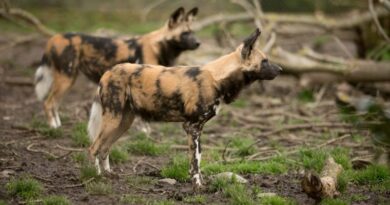Welcome to a thrilling journey through the world of wild dogs! In this blog, we’ll be your guides as we explore the top 15 wild dog breeds from around the globe. These incredible canines come in all shapes, sizes, and colors, and they live in some of the wildest places on Earth. From the African plains to the dense forests of Asia, we’ll uncover their secrets, discover their unique features, and learn about their roles in the wild. So, buckle up, because it’s time to embark on an adventure to meet these amazing wild dogs and get to know their untamed world.
Wild Dog Breeds In The World
Explore the untamed world of wild dogs to the ‘Top 15 Wild Dog Breeds in the World.’ These remarkable canines span continents and environments, each offering a unique glimpse into the wonders of the natural world.
African Wild Dog (Lycaon pictus)

The African Wild Dog, scientifically known as Lycaon pictus, is a remarkable canid native to sub-Saharan Africa. Often referred to as “African painted dogs” due to their distinctive and colorful coats, these wild dogs are renowned for their complex social structure and remarkable hunting prowess. They live in tight-knit packs, exhibiting cooperative hunting behavior. Unfortunately, African wild dog populations are threatened by habitat loss and human-wildlife conflict, making conservation efforts critical to their survival. These striking and highly social canids remain a symbol of Africa’s unique biodiversity and the importance of preserving their habitat.
Maned Wolf (Chrysocyon brachyurus)
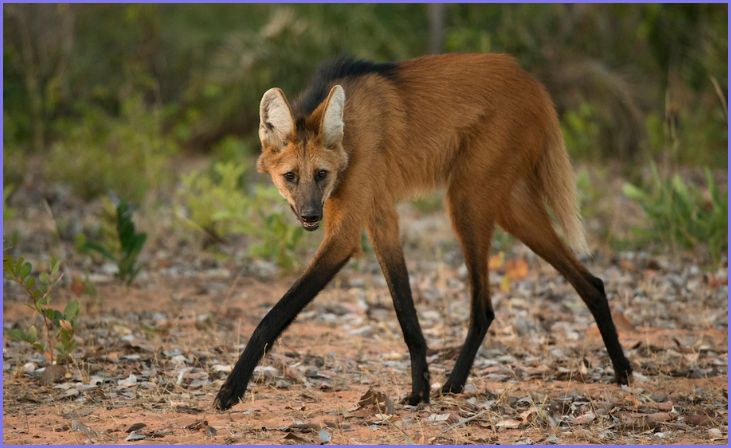
The Maned Wolf, scientifically known as Chrysocyon brachyurus, is a distinctive canid species native to South America. Despite its name, it is not a true wolf but a unique and solitary species characterized by its long legs and striking reddish fur. Found primarily in grasslands and savannas, the Maned Wolf is known for its omnivorous diet, which includes fruits and small animals. Its elusive nature and habitat loss due to agricultural expansion pose challenges to its conservation. The Maned Wolf stands as a captivating and charismatic representative of South American wildlife, underscoring the importance of protecting its natural habitat.
Dhole (Cuon alpinus)
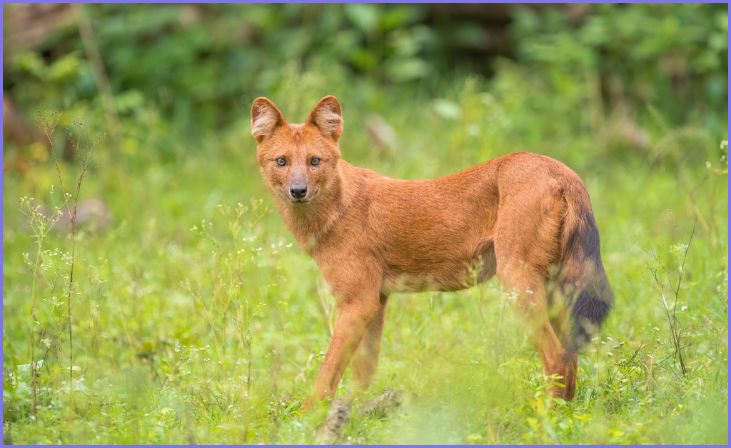
The Dhole, scientifically known as Cuon alpinus, is a wild dog found in parts of Asia. People sometimes call them “whistling dogs” because they make unique whistling sounds. Dholes are excellent hunters and usually live in packs. They are known for their reddish-brown coats and white-tipped tails. These social canines are great team players when it comes to hunting for food. Unfortunately, they face threats like habitat loss, which makes their conservation important to protect these intriguing and rare wild dogs.
Also Read- Puppy Care: Step-by-Step Guide to Raise a Happy & Healthy Dog
Bush Dog (Speothos venaticus)
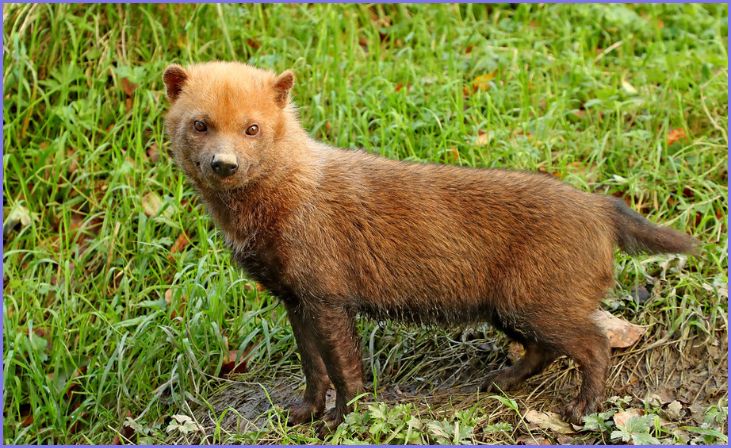
The Bush Dog, scientifically known as Speothos venaticus, is a small and mysterious wild dog found in parts of South America. These dogs are known for their short legs and reddish-brown fur. They live in packs and are quite elusive, often active at night. One unique thing about them is their love for swimming. They’re great at hunting near water and catching small animals. While they may not be as well-known as some other wild dogs, their conservation is crucial to ensure they continue to thrive in their natural habitat, which is often threatened by human activities.
Ethiopian Wolf (Canis simensis)
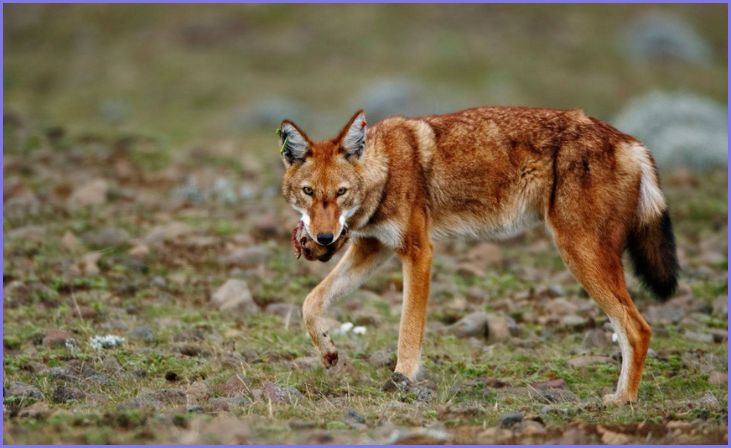
The Ethiopian Wolf, scientifically known as Canis simensis, is a fascinating canid found in the highlands of Ethiopia. These wolves are quite special because they live in Africa, where you wouldn’t expect to find wolves. They are known for their bright red coats and long, slender legs. Ethiopian wolves usually hunt small animals like rodents. Sadly, they are one of the rarest canids in the world and face the risk of extinction. Conservation efforts are vital to protect these unique wolves and their high-altitude home.
Arctic Fox (Vulpes lagopus)
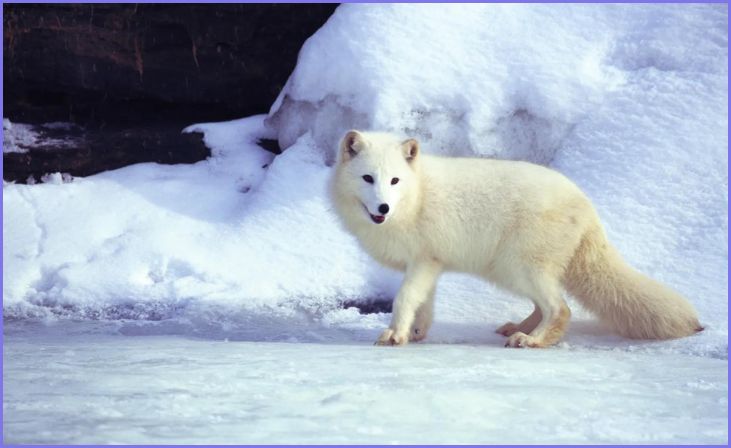
The Arctic Fox, scientifically known as Vulpes lagopus, is a fascinating fox species built for the extreme cold of the Arctic. They’re famous for their thick, snowy-white fur that changes to grayish-brown in summer. These foxes are incredibly adapted to cold climates and have furry paws for insulation. They’re excellent hunters and scavengers, often searching for small animals and leftovers. Arctic foxes are solitary creatures and often live in burrows. Their remarkable adaptability to freezing temperatures makes them true Arctic survivors.
Raccoon Dog (Nyctereutes procyonoides)
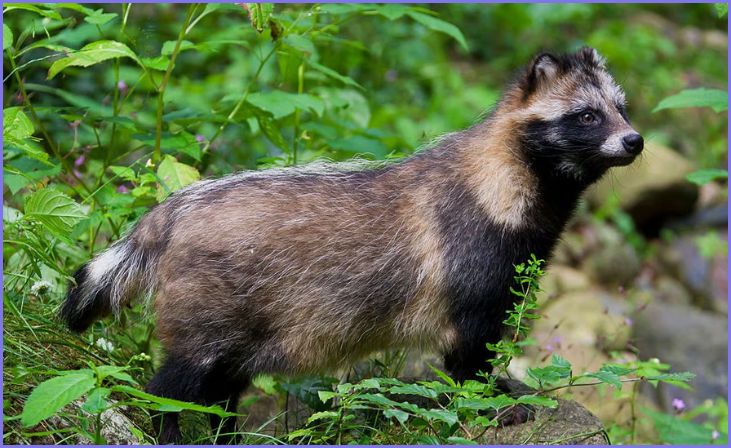
The Raccoon Dog, scientifically known as Nyctereutes procyonoides, is a fascinating animal that looks a bit like a mix between a raccoon and a dog. Despite its name, it’s not related to raccoons or dogs. These creatures are native to parts of East Asia and have bushy tails and cute faces. They are excellent climbers and swimmers, and they’re known for their adaptability. In some places, they’re even called “tanukis.” While they are interesting animals, it’s crucial to protect their habitats and populations, especially as they face threats from habitat loss and hunting.
Fennec Fox (Vulpes zerda)
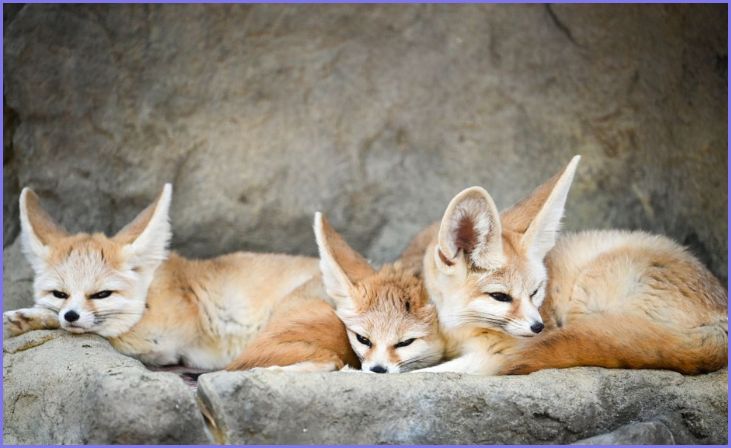
The Fennec Fox, scientifically known as Vulpes zerda, is a tiny fox species that lives in the deserts of North Africa. What makes them special are their big ears, which help them keep cool in the scorching desert heat. These foxes are mostly active at night, which is called being nocturnal. They eat a mix of things like insects, plants, and even small rodents. Their small size and unique adaptations make them well-suited to desert life. Fennec foxes are adorable creatures and are often seen as symbols of desert wildlife.
Coyote (Canis latrans)

The Coyote, scientifically known as Canis latrans, is a clever and adaptable wild dog found in North and Central America. They’re known for their brownish-gray fur and often live near humans. Coyotes are skilled hunters and eat a variety of things like small animals, fruits, and even insects. They’re quite smart and can adapt to different environments, which is why you might see them in cities as well as the wild. Coyotes are known for their howling calls, especially during the night. While they’re fascinating creatures, they can sometimes be seen as pests when they get too close to people’s homes.
Red Fox (Vulpes vulpes)
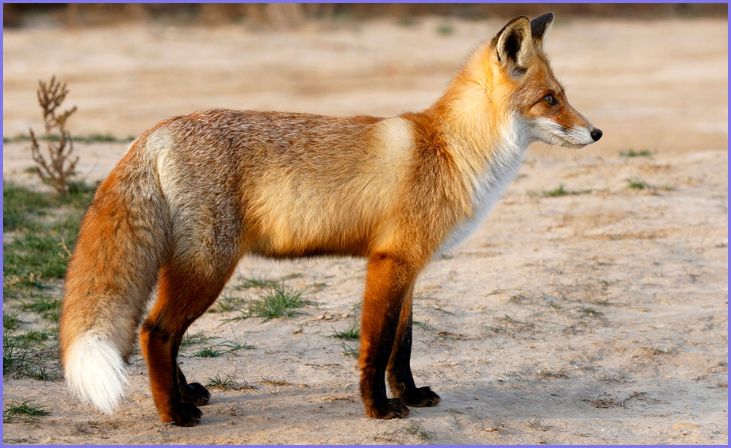
The Red Fox, scientifically known as Vulpes vulpes, is a smart and adaptable animal that lives in many parts of the world, including North America, Europe, and Asia. It’s called “red” because of its reddish-orange fur, though some may have other color variations. Red foxes are skilled hunters and eat various things like rabbits, rodents, and even fruits. They are known for their intelligence and can live in various habitats, from forests to cities. These foxes are active at night, which means they’re nocturnal. While they’re fascinating creatures, some people may consider them pests when they dig in gardens or search for food near homes.
Gray Fox (Urocyon cinereoargenteus)
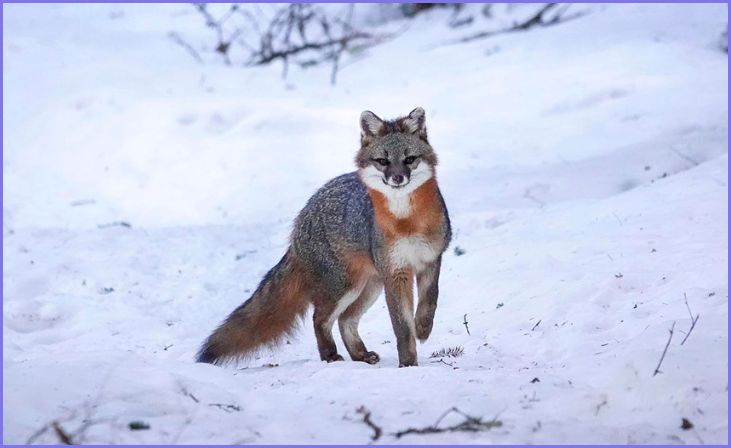
The Gray Fox, scientifically known as Urocyon cinereoargenteus, is an intriguing wild dog found in parts of North and Central America. Despite its name, it’s not always gray; its fur can also be reddish-brown or even black. What’s unique about them is that they’re excellent climbers, and they can even climb trees to escape from predators or find food. Unlike some other canids, gray foxes are active during the night, which makes them nocturnal. They have a varied diet, including small animals and fruits. Their adaptability and tree-climbing skills make them quite fascinating creatures in the wild.
Corsac Fox (Vulpes corsac)

The Corsac Fox, scientifically known as Vulpes corsac, is a small wild dog found in parts of Asia. They’re known for their beautiful fur, which is usually gray or pale yellow with a white belly. These foxes are adapted to living in arid, open landscapes like deserts and steppes. They’re skilled at hunting small animals and are active mainly during the night. Corsac foxes are quite solitary, meaning they like to be alone rather than in groups. They’re known for their quick movements and adaptability to harsh desert environments, making them interesting creatures in the wild.
Swift Fox (Vulpes velox)

The Swift Fox, scientifically known as Vulpes velox, is a small and speedy wild dog found in parts of North America. These foxes are known for their quick movements and agility, which is why they’re called “swift.” They have a sandy-colored coat that helps them blend into their grassy habitats. Swift foxes are primarily active at night, making them nocturnal creatures. They have a diverse diet, including small animals and plants. While they may not be as famous as some other fox species, their swift nature and adaptability to grassland habitats make them fascinating members of the animal kingdom.
Kit Fox (Vulpes macrotis)
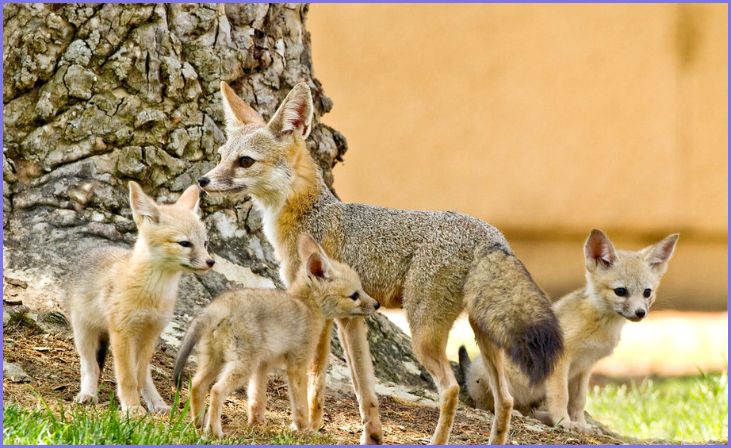
The Kit Fox, scientifically known as Vulpes macrotis, is a small wild dog found in parts of North America. These foxes are known for their petite size and big ears, which are even larger than those of some other foxes. They have a sandy or grayish coat, which helps them blend into their desert habitats. Kit foxes are mostly active at night, which means they’re nocturnal. Their diet includes a variety of things like insects, small animals, and plants. These foxes are well-suited to desert life and are known for their ability to survive in arid environments.
For More- 15+ Popular Breeds of Medium-Sized Dogs
Jackal (Various Species)
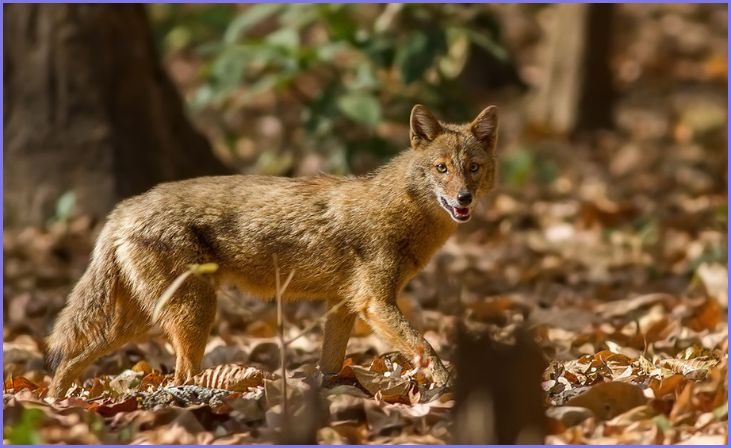
Jackals are a group of medium-sized wild dogs found in different parts of the world, including Africa, Asia, and parts of Europe. There are different species of jackals, such as the golden jackal, black-backed jackal, and side-striped jackal. These canids are known for their adaptability to various habitats, from deserts to grasslands. Jackals are skilled hunters and scavengers, often feeding on small animals, birds, and even plant matter. They usually live in pairs or small family groups and are known for their distinctive vocalizations, which include howls and barks. Despite their adaptability, jackals face challenges from habitat loss and human activities, making their conservation important to ensure their survival in the wild.
Final Words
As our wild dog adventure comes to a close, we’ve traversed continents and explored the diverse world of these remarkable canines. From the fierce African Wild Dog to the clever Coyote, we’ve marveled at their adaptability, resilience, and the vital roles they play in their respective ecosystems. These wild dogs are not just fascinating creatures; they are symbols of the untamed beauty of our planet. As we celebrate their unique characteristics, let us also reflect on the importance of conservation efforts to ensure their continued survival in a changing world.
FAQs
Wild dogs are generally not domesticated and often exhibit behaviors and adaptations necessary for survival in the wild. They tend to have more robust physiques and specific hunting skills.
No, not all wild dog breeds are endangered. However, many face threats due to habitat loss, human-wildlife conflict, and poaching. Some are critically endangered, while others have healthier populations.
In some cases, yes. Hybridization between wild dogs and domestic dogs can occur, leading to concerns about genetic purity and the integrity of wild dog populations.
Wild dogs play crucial roles in maintaining the balance of ecosystems by controlling prey populations and serving as scavengers, which helps prevent the spread of disease.
You can support conservation efforts by contributing to reputable wildlife organizations, raising awareness about wild dogs’ importance, and respecting their natural habitats when visiting these areas.



